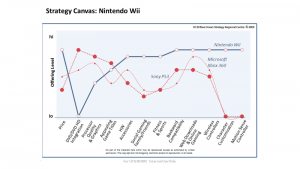Developing disruptive strategies dominate leadership discussions in all businesses these days. The reason ‘why’ is clear. The ‘how-to’ is not.
It is widely accepted that an organisation needs ‘to innovate to be disruptive’.
Stop! What was that? Is innovation the same as disruption? Is innovation leading to disruption? Are we talking about disruptive innovation? Very confusing indeed.
What tends to get a bit forgotten in the hyped-up debate is the fundamental: It has to unlock unprecedented VALUE. Of course this sounds like common sense. Then why is it so hard to do? And how will you know if a good idea is actually commercially viable?
HOW?
As soon as the ‘HOW-question’ is posed, the choice of robust solutions is slim. Challenging the status quo can be de-stabilising and fear of change emerges as the destination is unknown and success uncertain. The catch cry “before you can disrupt the market you have to disrupt yourself” appears to hold true.
However, if we accept that Value Innovation is at the heart of Disruption, Blue Ocean Strategy (BOS) offers a unique methodology and support to take an organisation on the journey of thinking and acting in a disruptive way. Even more relevant is the fact that BOS (Kim & Mauborgne, Harvard Press) is recognised as the only leader in both, strategic planning and change management.
3 BOS tools to explore:
Challenging the Status Quo – How to see and reconstruct market boundaries:
The Strategy Canvas is a striking visualisation of ‘how an industry works’ and defines boundaries. It brings clarity into the tactical differentiation game at play; when we are in the ‘me-too’ trap of striving to be a little bit better or a little bit cheaper. It becomes painfully clear that the ideas of benchmarking or best practise simply drive commoditisation. Henry Ford knew “If I had asked my customers what they wanted they would have said a faster horse.”
The image below illustrates the ‘to-be’ BOS Strategy Canvas for Nintendo Wii. The idea is to start with a current state ‘as-is’ canvas, which typically shows very similar value curves between competitors, which is a certain indication of poor differentiation and price pressure. The goal of the customer-centric BOS process is to arrive at a ‘to-be’ value curve (see below) that re-defines industry factors so that the curve is clearly divergent based on the customer’s value perception.
At the heart of the journey from the as-is to the to-be canvas is field-work. There is only one place to find fresh perspectives and insights for latent opportunity – the skillful observation of your customers AND non-customers. Traditional research will simply not do the trick – it will confirm what you already know “Give me more, at a lower price and do it faster.”
Thinking about the non-customer: Reaching beyond existing demand and segmentation
Marketing 101 suggests that we either differentiate at higher cost/price, or, we pursue the volume game that appeals to the masses at the lowest possible cost/price. A differentiation strategy is typically driven by segmentation of addressable markets looking to identify those customers who see higher value in the products/services on offer. BOS turns this thinking on its head. It proposes the simultaneous pursuit of both, higher value at lower cost which holds the promise of unlocking large market potential because it disrupts entrenched dynamics. The BOS discovery process poses the hard question: WHY do potential customers NOT buy us? ‘Why not’ is the magic question that changes our perspectives and inspires new insights. This phase works brilliantly with Design Thinking tools to generate Insights through Observation.
The BOS 4-Action Framework: Building Execution into Strategy AND kick-starting commercialisation
The BOS 4-Action Framework is a simple yet extraordinarily powerful tool to evaluate the viability of ideas. It poses key questions to craft a new value curve for the ‘to-be’ Strategy Canvas: Which factors that the industry takes for granted should be ELIMINATED, CREATED, REDUCED or INCREASED?
If we don’t eliminate and create factors, then we are not in the realm of disruptive potential. If we only raise and reduce factors, we do good marketing but remain stuck in continued pursuit of competitive differentiation. Turning insights into ACTIONS is a powerful way to build execution into strategy.
There are many more elements to the rich Blue Ocean Strategy methodology and facilitation. If these three examples inspire you to learn more, we encourage you to search “Blue Ocean Strategy” online, read the case studies, and the books “Blue Ocean Strategy” and “Blue Ocean Shift”.
If you think you would enjoy a conversation about my favourite topic – contact me! Ursula Dauenhauer, Director, Business Backstage Pty Ltd on +61 401 147 493 or ursula@gotomarketconsulting.com.au.
About Ursula Dauenhauer, Director of Business Backstage Pty Ltd, works with leadership teams of midsized B2B organisations who want to grow revenue and look for fresh thinking, structure and focus to not only get a practical plan, but also implement it. Over the last 15 years, Ursula has been working with leadership teams of more than 95 Australian medium sized organisations. Her straight-talk facilitation style is disciplined, and outcome focused.


